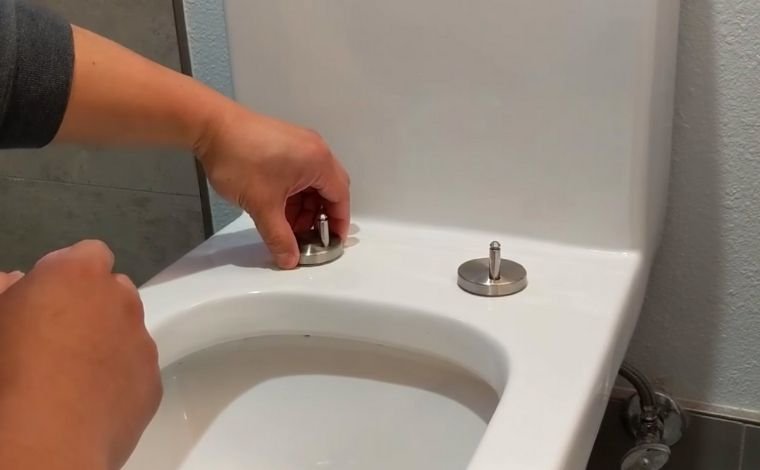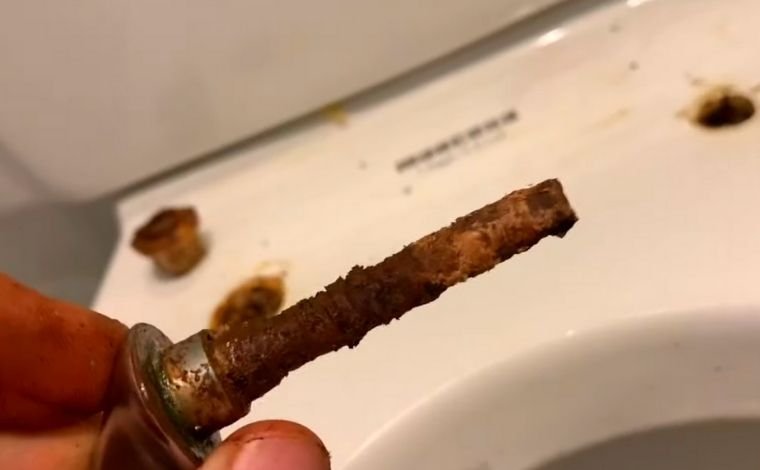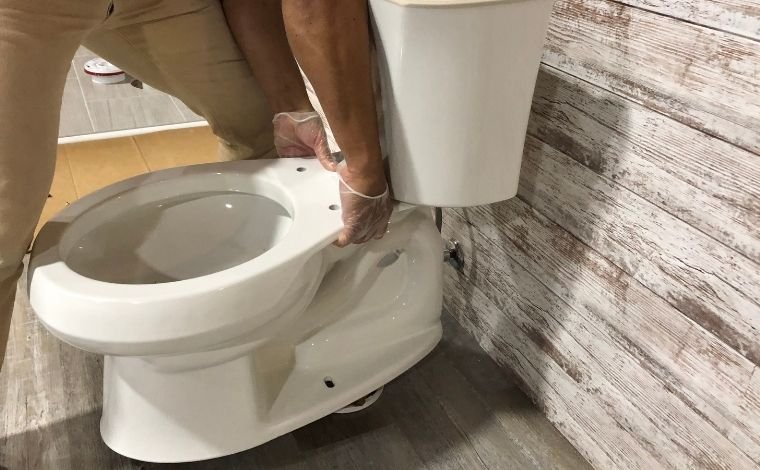Removing a toilet seat by yourself may seem like an easy chore, but things can get nasty if you have rusty or firmly tightened nuts. If you have a stubborn toilet seat to remove, you may need to use force with several tools. The tools include a hacksaw, a socket set, a screwdriver, a wrench, a putty knife, and a drill. With these tools, removing a toilet seat is very simple.
How to Remove a Toilet Seat by Yourself?
Time Required for Professionals: 10–15 minutes
Time Required for DIYers: 15–30 minutes
Bidet Seat Removing Time: 25–40 minutes
Plumber cost: $50-$100
Normal toilet seat replacement cost: $50-$150
Bidet Seat Replacement Cost: $150-$250
Washlet+ Seat Replacement Cost: $250–$450
Step 1: Open the bolt housing to access the seat fasteners
A good number of toilet seats are connected to the toilet bowl with two plastic bolts and nuts. The plastic bolts are usually hidden below a small plastic housing at the top of the toilet seat. You can remove these with your bare hands or a screwdriver. Don’t apply a lot of pressure as you may damage the housing. Also, you don’t need to turn off the toilet’s water supply.
Step 2: Grip the nut firmly
Next, you will see the bolts. Find the nuts screwed onto the threaded ends of all the bolts. Some nuts usually feature a shape like a wingnut, thus, enabling you to hold it in place by using your hand. If your grip is weak, you can also use pliers to grip the wingnut.
Step 3: Unfasten the bolts
Take a screwdriver and unfasten the bolts. This is done by holding the nut on the threaded end of the bolt. Then, put the screwdriver into the bold head and turn it counterclockwise to unscrew the bolt. Avoid using screwdrivers that don’t fit the bolt head properly. Such screwdrivers can cause the bolds to deform when they are forced to unfasten the bolts. It’s better to use a large screwdriver if the bolt is made of plastic.
Related article: How to Replace a Faulty Toilet Fill Valve?
Step 4: Apply a lubricate on corroded parts
If the bolts are not stubborn and you have managed to unfasten the seat, you can gather the bolts, nuts, and any loose parts and keep them securely. Additionally, you can go ahead and remove the seat. But if the bolts are stubborn and cannot be unfastened, you should proceed with this step.
If you have any corroded metal parts, use penetrating oil to lubricate them. One of the most popular lubricates used is WD40. Spray this substance on rusty bolts and nuts. Give them 5 to 10 minutes so that the lubricating oil can seep through the bolts and nuts’ tiny spaces.
Step 5: Secure the toilet seat with tape
Unlike removing a seat without stubborn stains, you may be forced to tape your seat if the bolts are stubborn. This helps to keep the seat secure and safe. If the bolts are incredibly stubborn, you may have to cover the seat with cover material and tape it. You will be protecting the plastic seat and porcelain from being damaged.
Step 6: Remove the bolt with a socket set
An old damaged toilet seat can cause some problems while cleaning the toilet. When you’re done covering and protecting the seat, you can proceed to unfasten the bolts. You can easily fit the socket set wrench onto the nuts holding the bolts in place. However, if your bolts are tricky to access, you may need a deep socket set to access them.
After fitting the socket on the bolt, turn it counterclockwise firmly to loosen the nut. Use moderate force to unfasten the bolts. But if they are stubborn, add slight pressure on your wrench for short intervals. Repeat this until the bolts loosen. If the bolt is loosened, you should go ahead and loosen the nut and remove the seat.
Step 7: Cut through the secured hardware
If the bolts and nuts refuse to loosen even after applying a lubricant, you should use a hacksaw to cut them off. To cut the bolts without damaging your porcelain, you need to do it with something like a putty knife on the head of a bolt. Next, you can now cut away the bolts holding your toilet seat using a hacksaw.
Related article: Adjust The Correct Float level with ball & cylinder float
An ordinary hacksaw will do a great job cutting through the stubborn bolts, but you will have to use a mini hacksaw to cut the hardware as it fits entirely correctly. Cutting the bolts may take some time; hence, you will have to exercise some patience.
Step 8: Drill through tough bolts
If everything that we’ve discussed above doesn’t work, you should drill the bolts and nuts as a last resort. Wear safety glasses and, if possible, gloves. Next, put a thin drill bit into your drill and drill into the bolt with a firm, constant pressure where the nut and bolt meet. Continue drilling through the nut and change to larger drill bits as the hole widens. Please get rid of the nut when it becomes loose.
Use pliers to remove the drilled bolt and nut. Always carry out this procedure with caution, as it’s quite dangerous. Besides, it would help if you were careful not to dig into the porcelain or plastic seat. You may end up damaging them.
Step 9: Remove the toilet seat
After removing the bolts, you can now get rid of the seat and replace it with your new toilet seat. Note that the final methods that we’ve highlighted should only be used when the nuts and bolts are corroded. But if they’re not, use the first method as it’s the easiest and safest.
How to maintain your toilet seat for longevity
- Add seat stabilizers to strengthen your toilet seat. These can even be acquired at your local store.
- Make sure to tighten your toilet seats with rubber bushings so that they don’t slide around.
- If you have worn-out parts on the toilet seat, replace them as soon as possible. Never fail to change a cracked toilet seat, as it can even hurt you.
- Clean the seat and its parts regularly. This is because dirt and stains can cause your seat to corrode quickly.
Bottom line
If you follow the above steps, removing your toilet seat will be super easy. However, you should have the right tools to make your work easier. For non-stubborn toilet seats, you will remove them in a few straightforward steps. But for stubborn toilet seats, you will need a socket set, a hacksaw, and a drill to remove it. Whichever the case, the above steps should help you remove your toilet seat.
Hi, this is Robert Crossan, the owner of this website, has 17 years of experience in the installation, maintenance, and repair of toilets and plumbing systems. After completing the Level 2 Basic Plumbing course in 2005, I started working in both domestic and commercial buildings as a professional plumber. So I can figure out the core difference between different toilet models and brands. It also helped me monitor their work performance and setbacks.